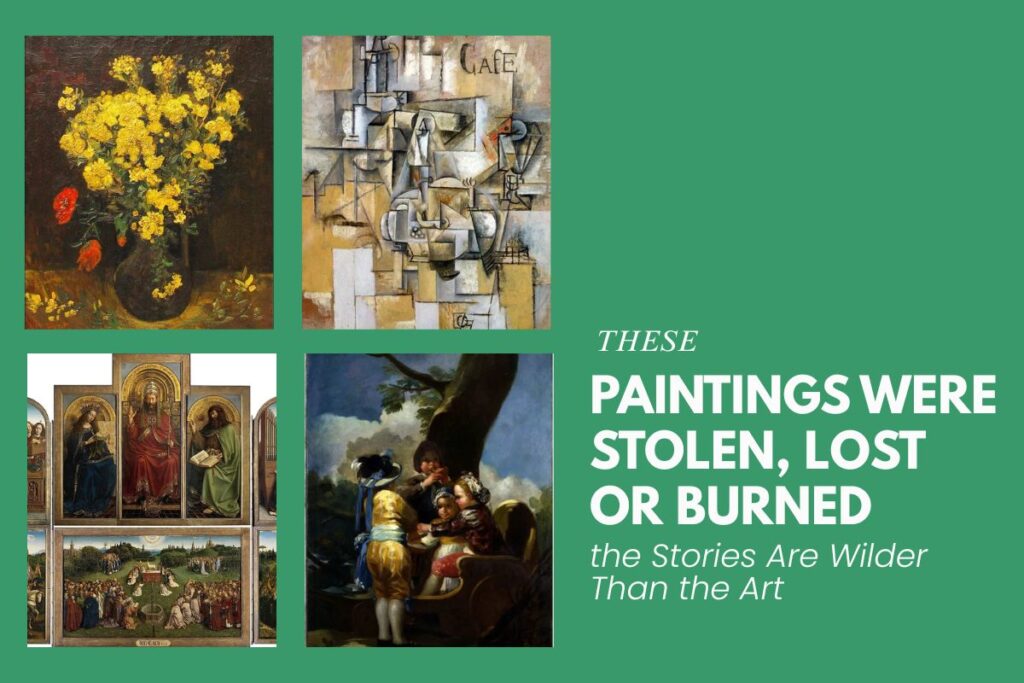
There is something haunting about a nail sticking out of a museum wall that once held a masterpiece and has remained untouched for years. Some paintings were stolen because they were famous, while others became famous only after they were stolen.
No thief could have planned it better.
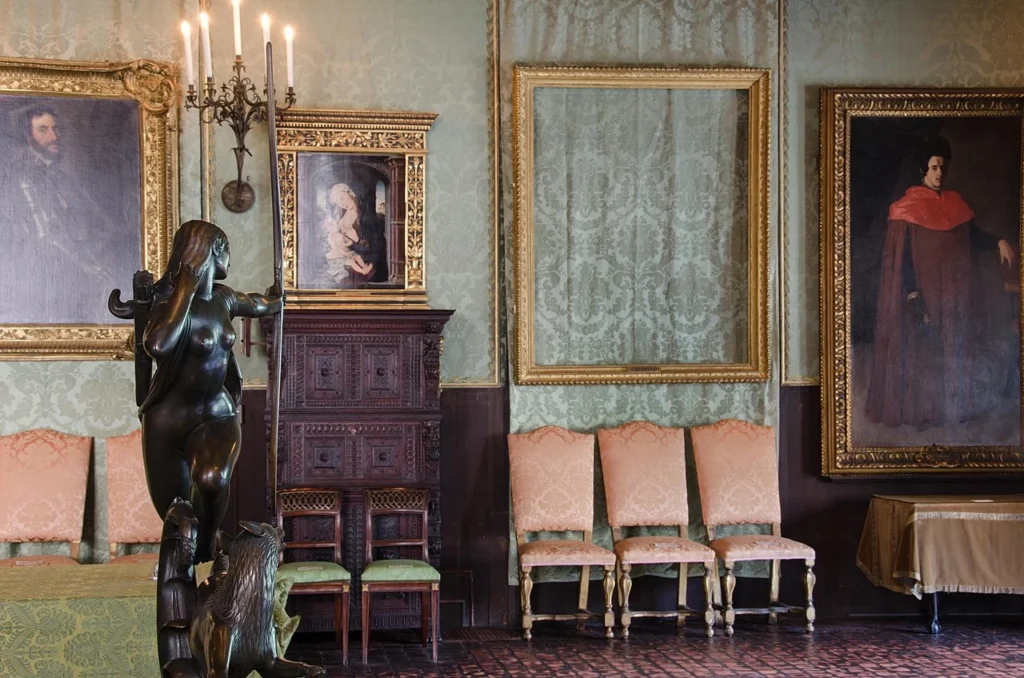
The man who walked out with Mona Lisa under his coat
In August of 1911, a handyman named Vincenzo Peruggia entered the Louvre in Paris wearing a white worker’s smock. He hid overnight inside a supply closet. The next morning, he took La Joconde off the wall, removed its protective glass, and carried the painting out under his coat.
He walked through the streets of Paris with the most valuable painting in the world tucked beneath his arm.
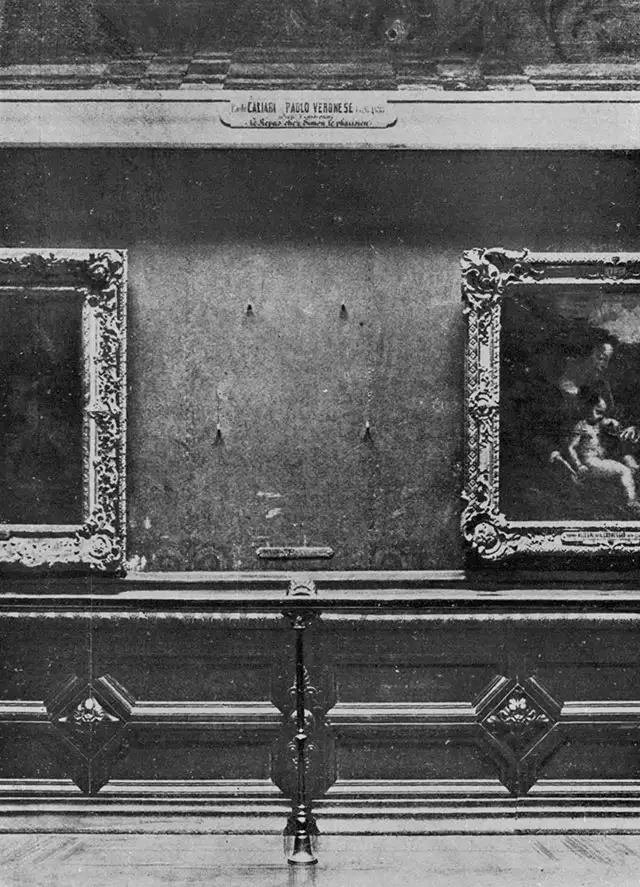
Peruggia kept it hidden in a trunk for two years, claiming he had taken it for patriotic reasons because he believed it rightfully belonged in Italy. When he tried to sell it to an art dealer in Florence, he was reported and arrested.
The trial was brief, the prison sentence even shorter, and the Mona Lisa returned to the Louvre with more fame than it had ever known.
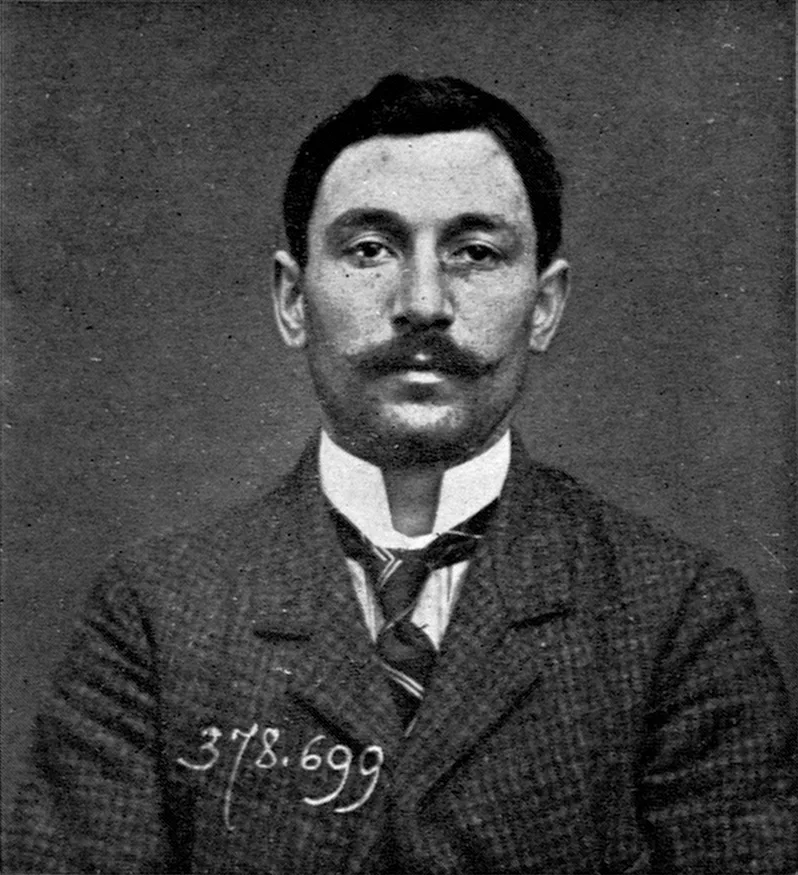
A heist carried out in police uniforms and silence
In Boston, in the early hours of March 18, 1990, two men dressed as police officers arrived at the Isabella Stewart Gardner Museum. They rang the buzzer, were let in by the guards, and said they were investigating a disturbance.
There was no disturbance.
After handcuffing the guards and locking them in the basement, the thieves spent over 80 minutes calmly moving through the museum and selecting their loot.
They took thirteen works, including Rembrandt’s The Storm on the Sea of Galilee, Vermeer’s The Concert, and Manet’s Chez Tortoni. They sliced the paintings from their frames with a blade.
The empty frames were returned to the wall, where they remain to this day as a quiet accusation in an even quieter room.
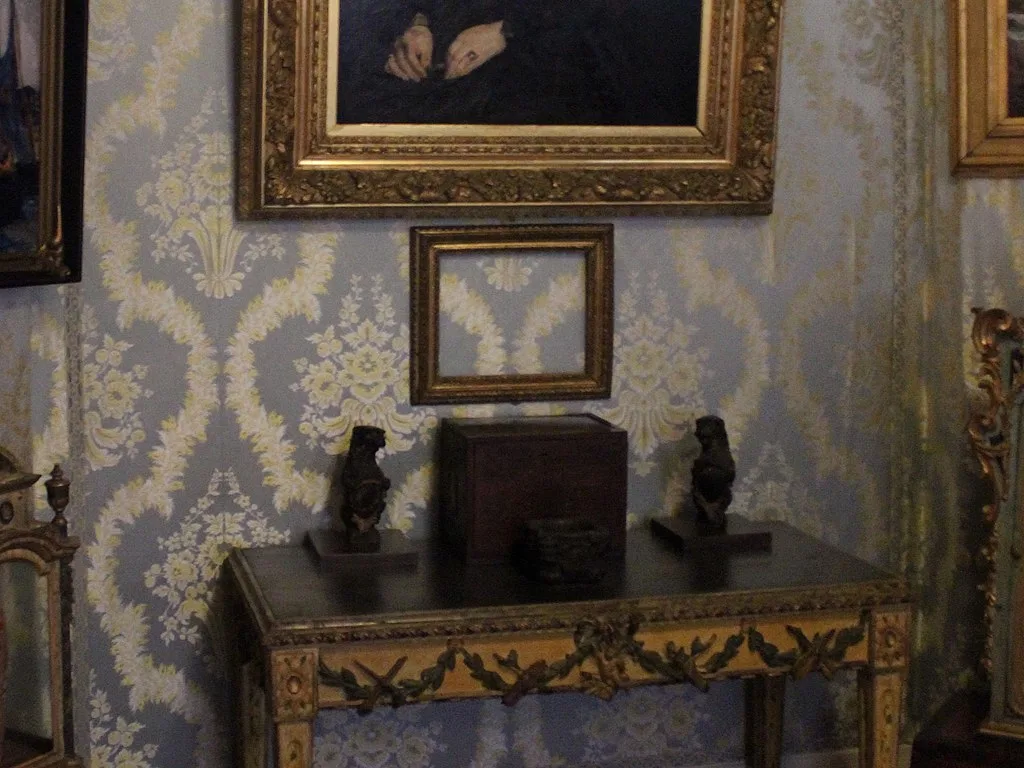
Although the case remains open and the museum still offers a ten-million-dollar reward, no one has ever been arrested.
Van Gogh gets stolen again and again, like he is still not finished
His paintings, small in size and heavy with emotion, have become the most frequently stolen artworks in the world.
In 2010, Poppy Flowers vanished once again from a museum in Cairo, stolen in broad daylight while the security system was off and no guards were present.

Interpol added it to its stolen art list, and it remains missing to this day.
That same year, two more Van Gogh works were taken from the Van Gogh Museum in Amsterdam. Thieves used a ladder to reach the roof, smashed a window, and escaped with View of the Sea at Scheveningen and Congregation Leaving the Reformed Church.
Fourteen years later, the paintings resurfaced in an Italian farmhouse connected to organized crime. They were found wrapped in cloth, stored behind a wall panel.
30 September ON THIS DAY IN 2016, TWO PAINTINGS WITH A COMBINED VALUE OF 100 MILLION DOLLARS WERE RECOVERED AFTER…
Posted by JayFm Live on Thursday, September 30, 2021
A missing panel and a church that never forgot
The Ghent Altarpiece by Jan van Eyck is one of the most studied religious artworks in Europe. In 1934, one of its panels titled The Just Judges was quietly removed from Saint Bavo’s Cathedral in Belgium.
The thief left behind a ransom note asking for one million francs, followed by a second letter warning that the panel would never be seen again.

That part was true. The original Just Judges never returned, and although a replica now fills the gap, some investigators believe the real panel may still lie buried beneath the cathedral.
Picasso gets stolen, then thrown away
In 2010, Le pigeon aux petits pois was stolen from the Musée d’Art Moderne in Paris. The thief entered through a broken window while the alarm system failed to respond.
After the theft, an accomplice panicked and placed the $28 million painting in a trash container on the street. By the time anyone realized, the container had been emptied.
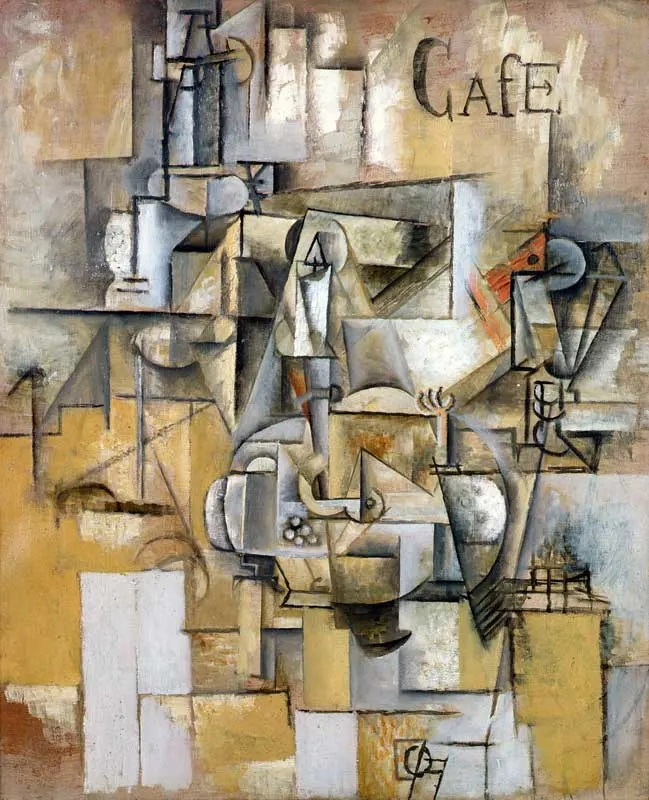
The painting has never been recovered, and a court eventually concluded that it was most likely destroyed. Still, the art world continues to hold on to the possibility that it survived.
The forgery that fooled a museum for ten years
In 2002, Henri Matisse’s Odalisque in Red Pants was quietly swapped for a high-quality fake at the Caracas Museum of Contemporary Art.
For more than a decade, no one noticed until the real painting was finally spotted in Miami in 2012 during an undercover FBI sting operation.
The real one came home, while the fake now rests in a labeled and sealed crate under the custody of federal agents.
A woman, a painting, and a war that tried to erase them both
Gustav Klimt’s Portrait of Adele Bloch-Bauer I was commissioned in 1903. It was taken by the Nazis in 1941.
For decades, Austria displayed it under the name The Lady in Gold, suppressing its Jewish provenance. In 1998, Adele’s niece, Maria Altmann, began a legal battle to reclaim it.
She won the case in 2006, reclaiming the portrait that had been taken during the war. When it later sold for 135 million dollars, the painting’s long journey through theft, erasure, and restitution became one of the most expensive art sales in history.
A Goya stolen from a truck, then quietly returned in New Jersey
In November 2006, Francisco de Goya’s Children with a Cart was stolen from an art transporter’s truck that had been left unattended overnight outside a hotel in Stroudsburg, Pennsylvania.
The painting, valued at over a million dollars, was headed to a blockbuster exhibition at the Guggenheim Museum but vanished before the show even opened.
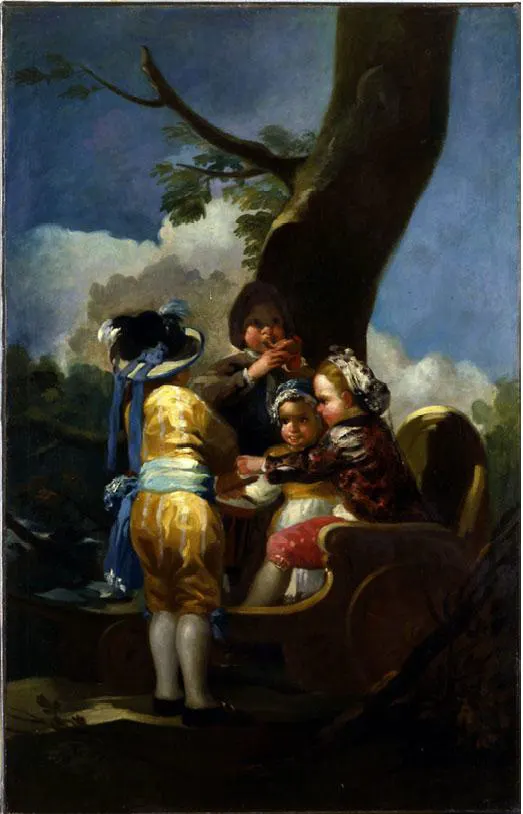
The FBI recovered the painting within two weeks, after media coverage led to a wave of public tips. One of them came from a lawyer who contacted the agency and disclosed its location in New Jersey, though no arrests were made.
Investigators believed the thieves had no idea what they were stealing, describing the incident as a typical cargo theft rather than a deliberate art heist.
Painted eyes shut, then burned in a stove
Lucian Freud’s Woman with Eyes Closed was one of seven paintings taken from the Kunsthal Museum in Rotterdam in 2012.
Thieves fled in less than 90 seconds. One of the stolen works ended up in the hands of a woman in Romania, the mother of one of the robbers.
She destroyed it in her wood stove to destroy the evidence.
Pigment traces in the stove matched Freud’s paint mixture, but all that remained were a few melted nails and the faint residue of linseed oil.
What remains when a painting disappears
The FBI’s Art Crime Team maintains a list of more than 4,000 missing works, with a combined value that exceeds eight billion dollars. Some may never resurface, while others will appear in the most unexpected places such as a dining room in Uruguay, an attic in Kraków, or a shipping crate labeled as antiques.
Most of the time, the only thing that remains is the photo, while the painting itself turns into a legend, a rumour, and eventually just a memory printed on a museum brochure. Some of them may already be hanging on a quiet wall somewhere, in a house where the curtains never open and the hallway lights remain off.
Not every collector wants to be remembered, yet every painting carries the memory of where it came from.

